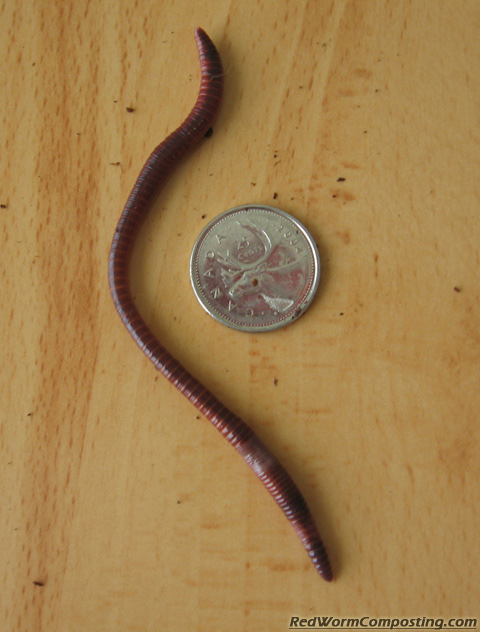Red Wiggler Express: High-Quality Worms Delivered Conveniently
Red Wiggler Express: High-Quality Worms Delivered Conveniently
Blog Article
Unlock the Tricks of Red Wigglers: Your Guide to Composting Success
The combination of red wigglers into composting methods offers a significant chance for boosting soil health and wellness and advertising sustainability. Recognizing their needs and habits is important for optimizing their possibility, from setting up an ideal worm container to feeding them the right materials.

What Are Red Wigglers?
(Lake Rhodhiss Bait)Red wigglers, scientifically referred to as Eisenia fetida, are a varieties of earthworm largely used in composting due to their amazing ability to disintegrate raw material effectively. These worms are identified by their reddish-brown coloration and a segmented body, generally gauging in between 3 to 4 inches in length. Unlike other earthworm species, red wigglers prosper in abundant, organic settings, making them ideal for vermicomposting systems.
Native to North America, they are typically located in decaying leaves and compost stacks, where they play an important duty in nutrient recycling. Their adaptation to residing in a wet, aerobic atmosphere enables them to consume large quantities of natural waste, breaking it down into nutrient-rich castings that boost dirt wellness.
Red wigglers reproduce quickly, with a solitary worm qualified of producing a number of cocoons each week, each containing multiple hatchlings. Comprehending the biology and behavior of red wigglers is vital for maximizing their capacity in composting applications.
Advantages of Using Red Wigglers
Using the power of red wigglers in composting supplies many advantages that boost dirt health and promote sustainable waste management. These exceptional microorganisms efficiently break down raw material, transforming cooking area scraps and lawn waste right into nutrient-rich vermicompost. This completed product is remarkably advantageous for plant development, as it improves dirt framework, enhances moisture retention, and enhances nutrition schedule.

(Lake Rhodhiss Bait)In addition, the visibility of red wigglers in your composting system can accelerate the composting process, creating top notch garden compost in a portion of the moment contrasted to standard approaches. The spreadings created by these worms are also bursting with valuable microorganisms that better enrich the soil community.
Setting Up Your Worm Bin
Developing an efficient worm bin is a straightforward procedure that can significantly boost your composting initiatives. The very first step is picking an ideal container. Worm containers can be made from plastic storage containers, wooden boxes, or readily readily available worm containers. Ensure the bin has ample water drainage and ventilation holes to preserve optimal moisture degrees and air movement.
Following, prepare the bed linens product, which acts as the worms' environment. A mix of shredded newspaper, cardboard, and coconut coir works well, giving a comfy environment for the worms. Go for a bed linen depth of regarding 4-6 inches. Moisten the bedding gently, ensuring it appears like a wet sponge without excess water pooling at the bottom.

Feeding Your Red Wigglers
To make sure the health and performance of your red wigglers, it is vital to give them with a balanced diet regimen that satisfies their nutritional demands. Red wigglers grow on a diverse array of organic products, which not just provide required nutrients yet also promote effective composting.
Begin by integrating cooking area scraps such as veggie peels, fruit cores, and coffee grounds. Prevent citrus fruits, onions, and garlic, as these can be detrimental to worm health and wellness. In addition, introduce shredded paper, cardboard, and dry fallen leaves to develop a well-aerated setting.
Feeding frequency must be kept track of; normally, worms can consume half their body weight in food weekly. It is important to stay clear of overfeeding, as excess food can result in unpleasant odors and draw in parasites. An excellent technique is to include food in percentages, allowing worms to process it prior to presenting extra.
Preserving wetness degrees is likewise important; the bed linens needs to perspire yet not soaked. Be sure to consistently inspect the temperature level and pH degrees of the bin to make sure an optimum atmosphere for your red wigglers, ultimately enhancing their composting efficiency.
Harvesting and Utilizing Garden Compost
A successful composting procedure with red wigglers culminates in the abundant, dark compost called vermicompost, which can considerably boost soil health and wellness and plant development. Harvesting this nutrient-dense product commonly happens every 3 to six months, depending on the dimension of your system and the amount of natural matter being refined.
To gather, carefully different the compost from the worms and any kind of undecomposed products. One efficient approach involves moving the components of the container to one side and adding fresh bed linens and food to the empty area, encouraging the worms to move. After a few days, the garden compost can be collected from the contrary side.
It is essential to utilize vermicompost appropriately to optimize its advantages. It can be utilized as a top clothing for yard beds, combined into potting dirt, or made right into a nutrient-rich liquid plant food called "worm tea." This application approach aids to provide crucial nutrients straight to plant origins, advertising much healthier development. By incorporating vermicompost right into your horticulture routine, you not just reuse organic waste however additionally create a successful environment that sustains lasting gardening practices.
Conclusion
In summary, red wigglers offer as phenomenal allies in composting efforts, changing natural waste into nutrient-rich vermicompost (Red Wiggler Express). Their unique biological qualities and reliable waste handling abilities add significantly to lasting gardening techniques. By recognizing the ideal problems for their environment, feeding needs, and compost harvesting methods, garden enthusiasts can enhance soil health and wellness and advertise plant vigor. Embracing vermicomposting not only reduces garbage dump waste yet also cultivates a more ecologically liable approach to gardening and source administration.
Report this page